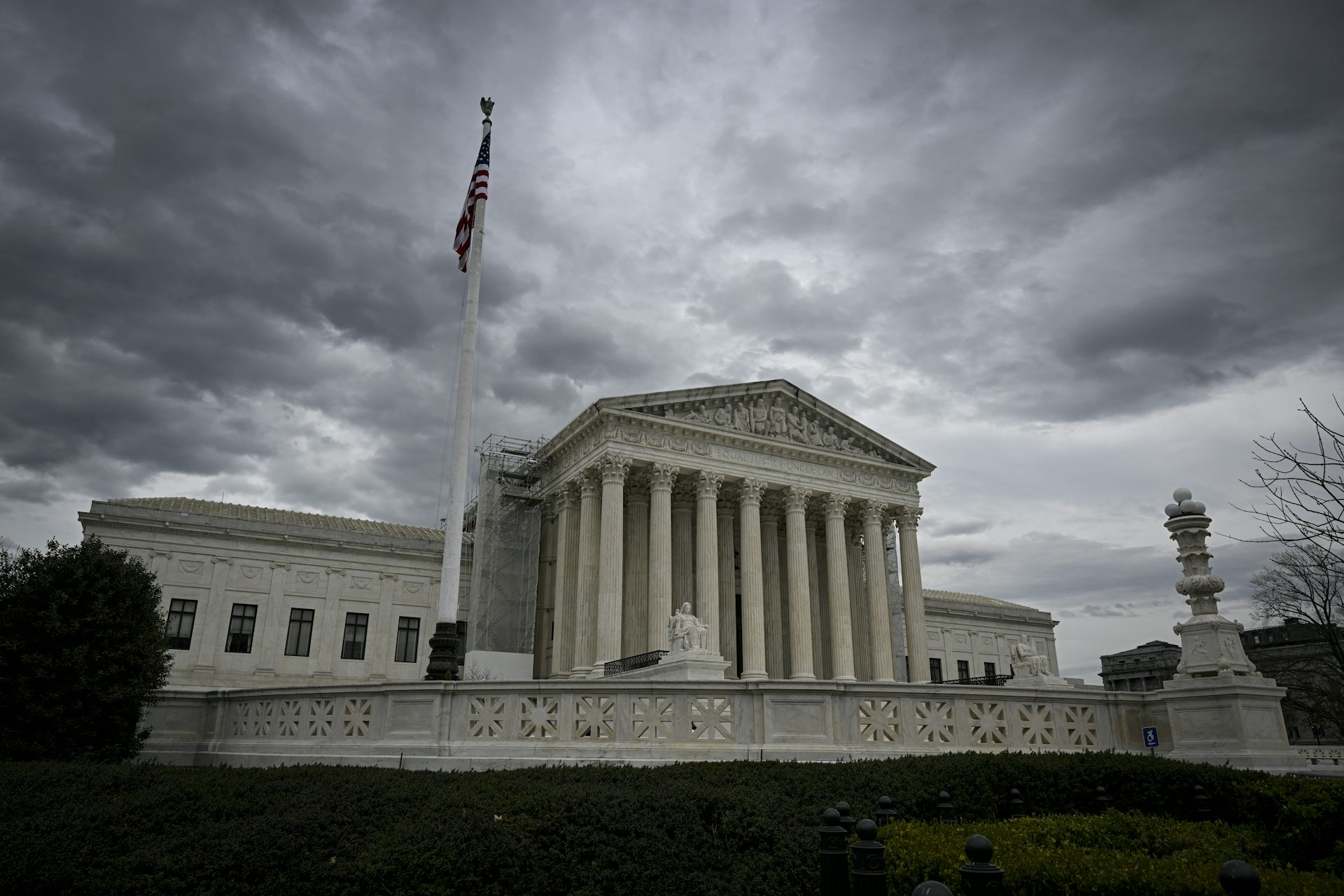Despite Rumors, Piers Morgan’s ‘Announcement’ Isn’t Bitcoin-Related
Despite Rumors, Piers Morgan’s ‘Announcement’ Isn’t Bitcoin-Related


The well-known British journalist clarified in a tweet prior to the announcement of his new book that the announcement was not related to Bitcoin.
British journalist and TV personality, Piers Morgan, made his “big announcement” on Twitter on July 16 — but despite social media rumors about a potential Bitcoin endorsement it wasn’t crypto-related
Instead Morgan said he’ll be launching a book related to a “liberal war” and COVID-19 called Wake Up. He’d earlier addressed the rumours he’d start providing Bitcoin advice (BTC) in the following tweet:
UPDATE: No, I’m not Ghislaine Maxwell’s secret husband, nor am I transitioning, providing Bitcoin advice, quitting GMB, going vegan or replacing Jofra Archer in the Test match.
— Piers Morgan (@piersmorgan) July 16, 2020
All will be revealed at high noon.
The Bitcoin joke refers to rumors that began in a thread about Morgan’s tweet stating that he will make a “big announcement.”
Joking about Twitter’s hack attack
Most of the replies joked about a “Bitcoin giveaway” by Morgan after the massive hack of Twitter launched on July 15 that saw some of the most high profile accounts in the world post about a BTC scam.
This isn’t the first time Morgan has been tied to a crypto-related story. Since 2017, scammers have been impersonating Morgan in an advertising campaign featuring fake statements about his “latest money making method.”
On June 16, the United Kingdom Advertising Standards Authority (ASA) and the Internet Advertising Bureau (IAB) launched a new system to detect and remove online fraud ads amid the rise of crypto scam ads.
Uncategorized
How much stress is too much? A psychiatrist explains the links between toxic stress and poor health − and how to get help
No one can escape stress, but sometimes it takes a physical and emotional toll that translates to disease and other health effects. The good news is that…

COVID-19 taught most people that the line between tolerable and toxic stress – defined as persistent demands that lead to disease – varies widely. But some people will age faster and die younger from toxic stressors than others.
So how much stress is too much, and what can you do about it?
I’m a psychiatrist specializing in psychosomatic medicine, which is the study and treatment of people who have physical and mental illnesses. My research is focused on people who have psychological conditions and medical illnesses as well as those whose stress exacerbates their health issues.
I’ve spent my career studying mind-body questions and training physicians to treat mental illness in primary care settings. My forthcoming book is titled “Toxic Stress: How Stress is Killing Us and What We Can Do About It.”
A 2023 study of stress and aging over the life span – one of the first studies to confirm this piece of common wisdom – found that four measures of stress all speed up the pace of biological aging in midlife. It also found that persistent high stress ages people in a comparable way to the effects of smoking and low socioeconomic status, two well-established risk factors for accelerated aging.
The difference between good stress and the toxic kind
Good stress – a demand or challenge you readily cope with – is good for your health. In fact, the rhythm of these daily challenges, including feeding yourself, cleaning up messes, communicating with one another and carrying out your job, helps to regulate your stress response system and keep you fit.
Toxic stress, on the other hand, wears down your stress response system in ways that have lasting effects, as psychiatrist and trauma expert Bessel van der Kolk explains in his bestselling book “The Body Keeps the Score.”
The earliest effects of toxic stress are often persistent symptoms such as headache, fatigue or abdominal pain that interfere with overall functioning. After months of initial symptoms, a full-blown illness with a life of its own – such as migraine headaches, asthma, diabetes or ulcerative colitis – may surface.
When we are healthy, our stress response systems are like an orchestra of organs that miraculously tune themselves and play in unison without our conscious effort – a process called self-regulation. But when we are sick, some parts of this orchestra struggle to regulate themselves, which causes a cascade of stress-related dysregulation that contributes to other conditions.
For instance, in the case of diabetes, the hormonal system struggles to regulate sugar. With obesity, the metabolic system has a difficult time regulating energy intake and consumption. With depression, the central nervous system develops an imbalance in its circuits and neurotransmitters that makes it difficult to regulate mood, thoughts and behaviors.
‘Treating’ stress
Though stress neuroscience in recent years has given researchers like me new ways to measure and understand stress, you may have noticed that in your doctor’s office, the management of stress isn’t typically part of your treatment plan.
Most doctors don’t assess the contribution of stress to a patient’s common chronic diseases such as diabetes, heart disease and obesity, partly because stress is complicated to measure and partly because it is difficult to treat. In general, doctors don’t treat what they can’t measure.
Stress neuroscience and epidemiology have also taught researchers recently that the chances of developing serious mental and physical illnesses in midlife rise dramatically when people are exposed to trauma or adverse events, especially during vulnerable periods such as childhood.
Over the past 40 years in the U.S., the alarming rise in rates of diabetes, obesity, depression, PTSD, suicide and addictions points to one contributing factor that these different illnesses share: toxic stress.
Toxic stress increases the risk for the onset, progression, complications or early death from these illnesses.
Suffering from toxic stress
Because the definition of toxic stress varies from one person to another, it’s hard to know how many people struggle with it. One starting point is the fact that about 16% of adults report having been exposed to four or more adverse events in childhood. This is the threshold for higher risk for illnesses in adulthood.
Research dating back to before the COVID-19 pandemic also shows that about 19% of adults in the U.S. have four or more chronic illnesses. If you have even one chronic illness, you can imagine how stressful four must be.
And about 12% of the U.S. population lives in poverty, the epitome of a life in which demands exceed resources every day. For instance, if a person doesn’t know how they will get to work each day, or doesn’t have a way to fix a leaking water pipe or resolve a conflict with their partner, their stress response system can never rest. One or any combination of threats may keep them on high alert or shut them down in a way that prevents them from trying to cope at all.
Add to these overlapping groups all those who struggle with harassing relationships, homelessness, captivity, severe loneliness, living in high-crime neighborhoods or working in or around noise or air pollution. It seems conservative to estimate that about 20% of people in the U.S. live with the effects of toxic stress.
Recognizing and managing stress and its associated conditions
The first step to managing stress is to recognize it and talk to your primary care clinician about it. The clinician may do an assessment involving a self-reported measure of stress.
The next step is treatment. Research shows that it is possible to retrain a dysregulated stress response system. This approach, called “lifestyle medicine,” focuses on improving health outcomes through changing high-risk health behaviors and adopting daily habits that help the stress response system self-regulate.
Adopting these lifestyle changes is not quick or easy, but it works.
The National Diabetes Prevention Program, the Ornish “UnDo” heart disease program and the U.S. Department of Veterans Affairs PTSD program, for example, all achieve a slowing or reversal of stress-related chronic conditions through weekly support groups and guided daily practice over six to nine months. These programs help teach people how to practice personal regimens of stress management, diet and exercise in ways that build and sustain their new habits.
There is now strong evidence that it is possible to treat toxic stress in ways that improve health outcomes for people with stress-related conditions. The next steps include finding ways to expand the recognition of toxic stress and, for those affected, to expand access to these new and effective approaches to treatment.
Lawson R. Wulsin received funding in 2010 from the Veterans Administration support a secondary analysis of data from the Framingham Heart Study, which was published and contributed in part to the substance of this article.
depression pandemic covid-19 treatmentGovernment
Supreme Court’s questions about First Amendment cases show support for ‘free trade in ideas’
These cases have asked the justices to consider how to apply some of the most sweeping constitutional protections – those of free speech – to an extremely…

This term, the U.S. Supreme Court has heard oral arguments in a total of five cases involving questions about whether and how the First Amendment to the Constitution applies to social media platforms and their users. These cases are parts of a larger effort by conservative activists to block what they claim is government censorship of people who seek to spread false information online.
The most recently heard case, on March 18, 2024, was Murthy v. Missouri, about whether the federal government’s direct communication with social media platforms, specifically about online content relating to the COVID-19 public health emergency, violated the First Amendment rights of private citizens.
The case stemmed from the Biden administration’s efforts to combat misinformation that spread online, including on social media, during the pandemic. The plaintiffs said White House officials “threatened platforms with adverse consequences” if they didn’t take down or limit the online visibility of inaccurate information – and that those threats amount to the unconstitutional suppression of free speech from private individuals who shared content that contained debunked conspiracy theories and contradicted scientific evidence.
It is not uncommon for government officials to informally pressure private parties, like social media platforms, into limiting, censoring or moderating speech by third parties. As Justice Amy Coney Barrett seemingly implied during the Murthy v. Missouri oral arguments, “vanilla encouragement” by government officials would be constitutionally permissible. But when the informal pressure turns into bullying, threats or coercion, it may trigger First Amendment protections, as the Supreme Court ruled in another case called Bantam Books v. Sullivan, from 1963.
But the Biden administration said its effort to fight COVID misinformation was normal activity, in which the government is allowed to express its views to persuade others, especially in ways that advance the public interest.

Several justices seemingly agreed with the Biden administration and accepted its view that ordinary pressure to persuade is permissible.
More broadly, the Supreme Court has wrestled with the application of the First Amendment to cases involving social media platforms. Earlier this term, the court heard several cases that involved content moderation – both by the platforms themselves and by public officials using their own social media accounts. As Justice Elena Kagan put it during one round of oral arguments: “That’s what makes these cases hard, is that there are First Amendment interests all over the place.”
Perhaps most fundamentally, the court seeks to evaluate the relationship between social media platforms and public officials.
A public official or a private social media user?
On March 15, the Supreme Court released its unanimous decision in Lindke v. Freed – another case involving social media platforms. The issue in that case was whether a public official can delete or block private individuals from commenting on the official’s social media profile or posts.
This case involved James Freed, the city manager of Port Huron, Michigan, and Facebook user Kevin Lindke. Freed initially created his Facebook profile before entering public office, but once he was appointed city manager, he began using the Facebook profile to communicate with the public. Freed eventually blocked Lindke from commenting on his posts after Lindke “unequivocally express(ed) his displeasure with the city’s approach to the (COVID-19) pandemic.”
The court ruled that on social media, where users, including government officials, often mix personal and professional posts, “it can be difficult to tell whether the speech is official or private.” But the court unanimously found that if an official possesses “actual authority to speak” on behalf of the government, and if the person “purported to exercise that authority when” posting online, the post is a government action. In that case, the official cannot block users’ access to view or comment on it.
The court ruled that if the poster either does not have authority to speak for the government, or is not clearly exercising that authority when posting, then the message is private. In that situation, the poster can restrict viewing and commenting because that is an exercise of their own First Amendment rights. But when a public official posts in their official capacity, the poster must respect the First Amendment’s limitations placed on government. The court sent a similar case, O'Connor-Ratcliff v. Garnier, back to a lower court for reconsideration based on the ruling in the Lindke case.

Who controls what’s online?
At the root of the plaintiffs’ claims in both these cases is content moderation – whether a public official can moderate another user’s content by deleting their posts or blocking the user, and whether the federal government can interact with social media platforms to mitigate the spread of debunked conspiracy theories and scientifically disprovable narratives about the pandemic, for instance.
Ironically, though conservatives argue that the federal government cannot interact with the social media platforms to influence their content moderation, Florida and Texas – states governed by Republican majorities in the statehouse and Republican governors – enacted state laws that seek to restrict the platforms’ own content moderation.
While the laws in each state differ slightly, they share similar provisions. First, both laws contain “must-carry provisions,” which “prohibit social media platforms from removing or limiting the visibility of user content in certain circumstances,” according to the Knight First Amendment Institute at Columbia University.
Second, both laws require the social media platforms to provide individualized explanations to any user whose content is moderated by the platform. Both laws were passed to combat the false perception that the platforms disproportionately silence conservative speech.
The Florida and Texas laws were challenged in two cases whose oral arguments were heard by the Supreme Court in February 2024: Moody v. NetChoice and NetChoice v. Paxton, respectively. Florida and Texas argued that they can regulate the platforms’ content moderation policies and processes, but the platforms argued that these laws infringe on their editorial discretion, which is protected by well-established First Amendment precedent.
During oral argument in both cases, the justices appeared skeptical of both laws. As Chief Justice John Roberts stated, the First Amendment prohibits the government, not private entities, from censoring speech. Florida and Texas argued that they enacted these laws to protect the free speech of their citizens by limiting the platforms’ ability to moderate content.
But social media users do not have any First Amendment protections on the platforms, because private entities, like Facebook, are free to moderate the content on their platforms as they see fit. Roberts was quick to respond to Texas and Florida: “The First Amendment restricts what the government can do, and what the government’s doing here is saying you must do this, you must carry these people.”
Where are the online boundaries of free speech?
Collectively, these cases demonstrate the Supreme Court’s interest in defining the boundaries of First Amendment protections as they relate to social media platforms and their users. Moreover, the court seems focused on establishing the limits of the relationship between government and social media platforms.
The justices’ questions during the NetChoice cases suggest that they are skeptical of government regulation that forces social media platforms to carry certain content. In this way, the justices seem poised to affirm the principle that government cannot directly or formally force an individual or, in this case, a private company, to convey a message that it does not wish to carry.
But the justices’ questions during Murthy v. Missouri seem to suggest that it is not a violation of the First Amendment for government officials to informally interact or communicate with social media platforms in an attempt to persuade them not to carry material the government dislikes.
Considering all of these cases together, the court seems posed to further promote a robust “free trade in ideas,” which was a theory first invoked in 1919 by Justice Oliver Wendell Holmes in Abrams v. United States. In Lindke v. Freed, the court identified the distinction between private speech on social media platforms by a public official, which is protected by the First Amendment, and professional speech, which is subject to First Amendment limitations that protect others’ rights.
In the NetChoice cases, the court seems ready to limit a state’s ability to directly compel social media platforms to convey messages that they may moderate. And in Murthy v. Missouri, the justices seem ready to affirm that while indirect compulsion may be unconstitutional, ordinary pressures to persuade social media platforms are permissible.
This promotion of a robust marketplace of ideas appears to stem from neither giving the government extra powers to shape public discourse, nor excluding government from the conversation altogether.
Wayne Unger does not work for, consult, own shares in or receive funding from any company or organization that would benefit from this article, and has disclosed no relevant affiliations beyond their academic appointment.
white house pandemic covid-19 spread suppressionUncategorized
US Economic Conditions Scream “Buy Gold”
US Economic Conditions Scream "Buy Gold"
Authored by Daniel Lacalle via The Epoch Times,
The manufacturing and consumer confidence weaknesses…

Authored by Daniel Lacalle via The Epoch Times,
The manufacturing and consumer confidence weaknesses of the United States are deeply concerning, particularly considering that all those allegedly infallible Keynesian policies are being applied intensely.
Considering the insanity of deficit spending driven by entitlement programs, the decline in the headline University of Michigan consumer sentiment index in March—from 76.9 to 76.5—is even worse than expected. Let us remember that this index was at 101 in 2019 and has not recovered the brief bounce shown by the reopening effect in March 2021. Consumer confidence is still incredibly low, and a decline in the expectations index fully explains the most recent decline. Persistent inflation, high gas prices, and declining real wages may explain the poor expectations of the average citizen. Furthermore, this poor consumer confidence reading comes after poor control group retail sales last month.
No, this is not a strong economy. The consumer confidence index, labor participation, and unemployment-to-population ratios, as well as real wage growth, remain significantly below the pre-pandemic level, and this after $6.3 trillion in new public debt that will likely reach $8 trillion by the end of 2024.
The manufacturing weakness of the United States is also a problem because this should be a period of high growth, considering the opportunities generated all over the world. Industrial output bounced 0.8 percent in February, but the January figure was revised to a larger 1.1 percent slump. If we factor in the decline in the Empire State survey, to -20.9 in March, it looks like the manufacturing decline will persist.
The shape of the U.S. economy also reflects the impossibility of the soft-landing narrative. Inflation remains well above target, and bond yields are reflecting the reality of persistent inflation. Furthermore, money supply growth stopped declining months ago.
If the money supply rises and government spending continues to rise, the Federal Reserve will be unable to cut interest rates, and the impoverishment of citizens by a loss of purchasing power will continue.
This is the result of an insane fiscal policy that increases spending and taxes. Weak growth, manufacturing decline, and worsening consumer confidence.
Demand-side policies and Keynesian experiments are leaving a once-strong economy on the same path as the eurozone: stagflation. A warning sign should be the fact that the increase in public debt completely justifies the gross domestic product recovery.
This is the problem of extraordinary monetary and fiscal experiments. Governments embrace massive spending and debt monetization under the premise that they will implement control policies if the warning signs appear, but when they do, they never stop spending. Economists close to the government said that the administration would reconsider and adjust its budget if inflation rose, and alarm bells rang. Now we have heard all the alarm bells, and the administration continues as if nothing happened. The Inflation Reduction Act became the Inflation Perpetuation Act; the rise in government borrowing is now evident in the 10- and 30-year curve; and the private sector is in an obvious contraction.
Trusting governments to moderate spending after an expenditure binge is simply an extremely dangerous bet that always ends with worse conditions for citizens. Once they start, they cannot stop, and the inevitable end is higher taxes, weaker growth, lower real wages, and a decline in the purchasing power of the dollar. All the figures in the U.S. economy scream “buy gold” because the government will always prefer to destroy the currency than to moderate the budget deficit and government size in the economy.
-

 Spread & Containment6 days ago
Spread & Containment6 days agoIFM’s Hat Trick and Reflections On Option-To-Buy M&A
-

 Uncategorized4 weeks ago
Uncategorized4 weeks agoAll Of The Elements Are In Place For An Economic Crisis Of Staggering Proportions
-

 International2 weeks ago
International2 weeks agoEyePoint poaches medical chief from Apellis; Sandoz CFO, longtime BioNTech exec to retire
-

 Uncategorized1 month ago
Uncategorized1 month agoCalifornia Counties Could Be Forced To Pay $300 Million To Cover COVID-Era Program
-

 Uncategorized4 weeks ago
Uncategorized4 weeks agoApparel Retailer Express Moving Toward Bankruptcy
-

 Uncategorized1 month ago
Uncategorized1 month agoIndustrial Production Decreased 0.1% in January
-

 International2 weeks ago
International2 weeks agoWalmart launches clever answer to Target’s new membership program
-

 Uncategorized1 month ago
Uncategorized1 month agoRFK Jr: The Wuhan Cover-Up & The Rise Of The Biowarfare-Industrial Complex





















